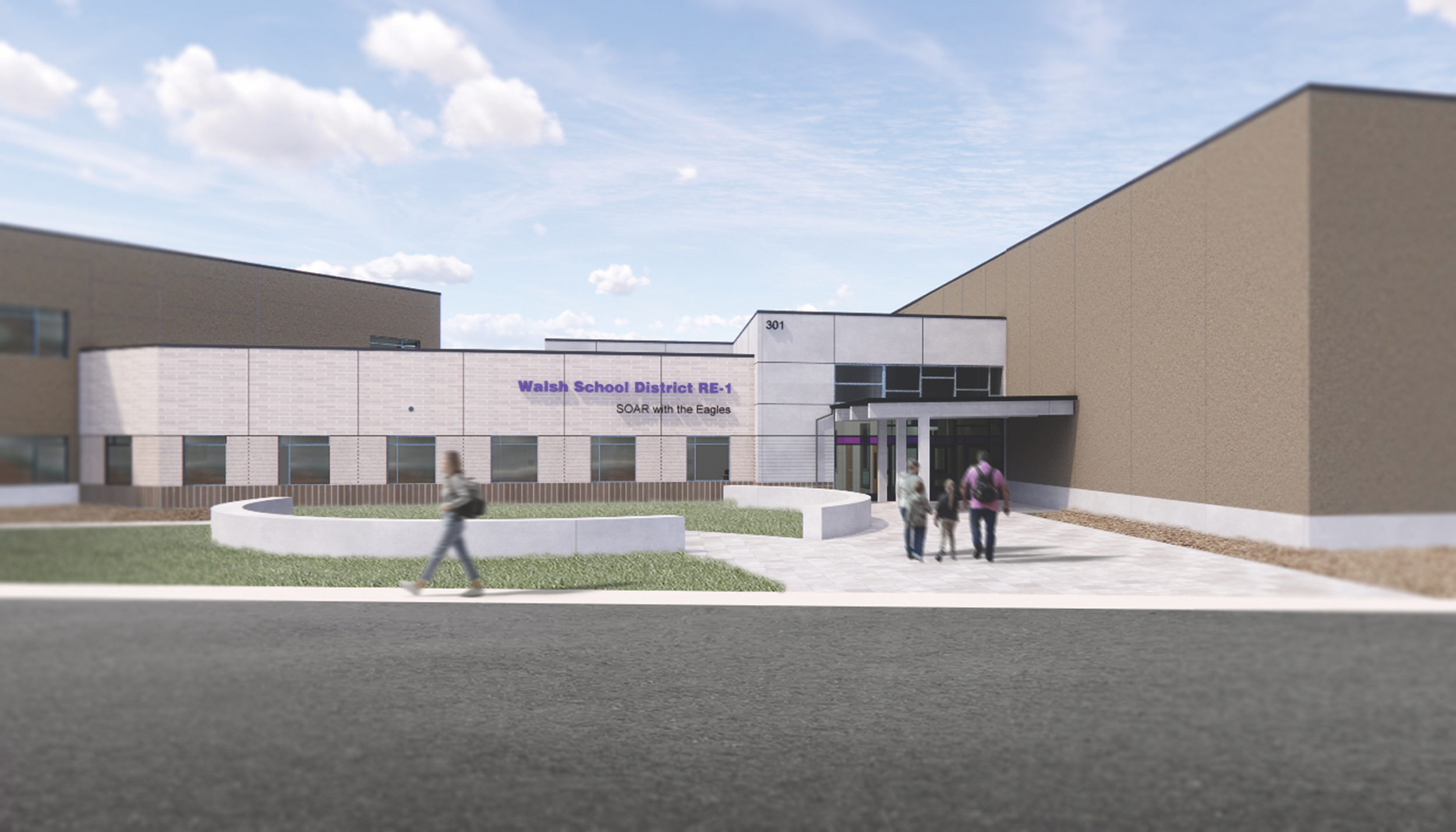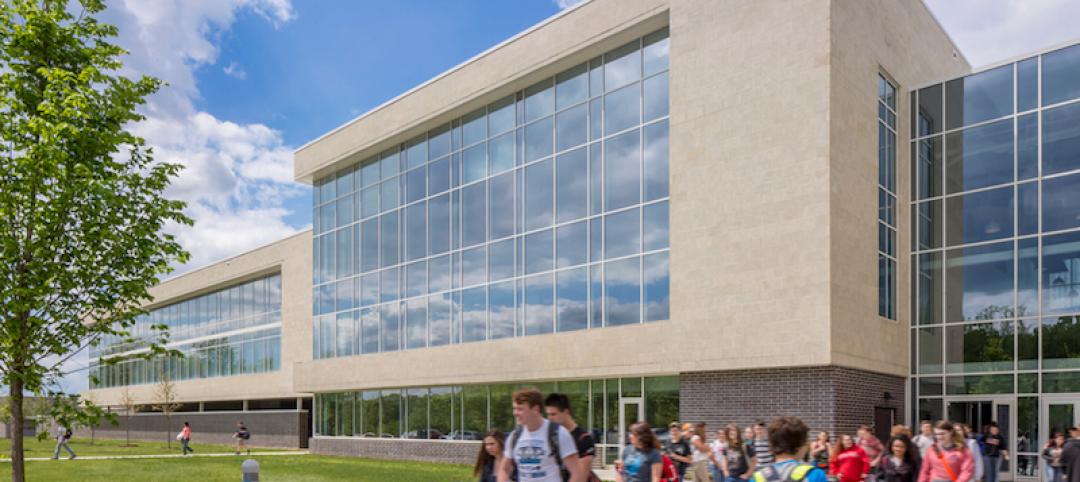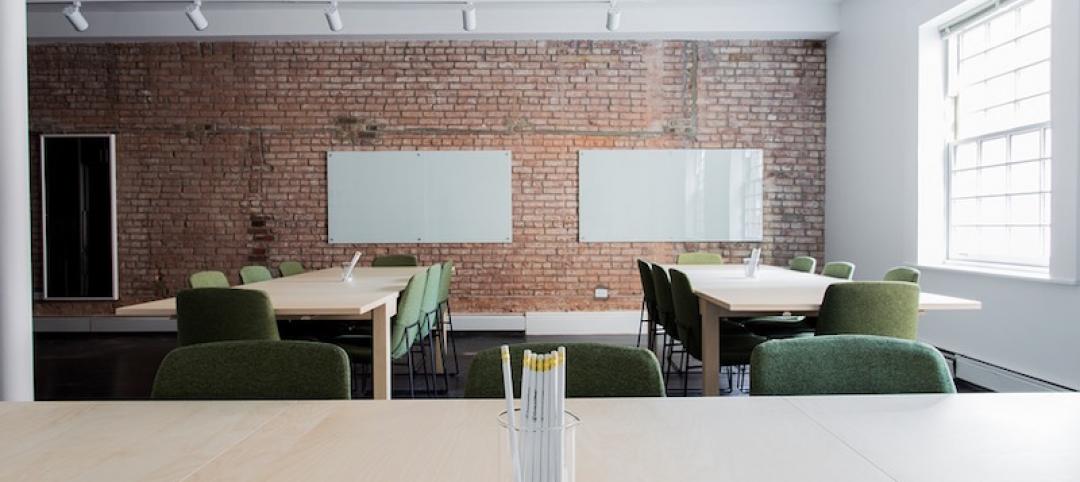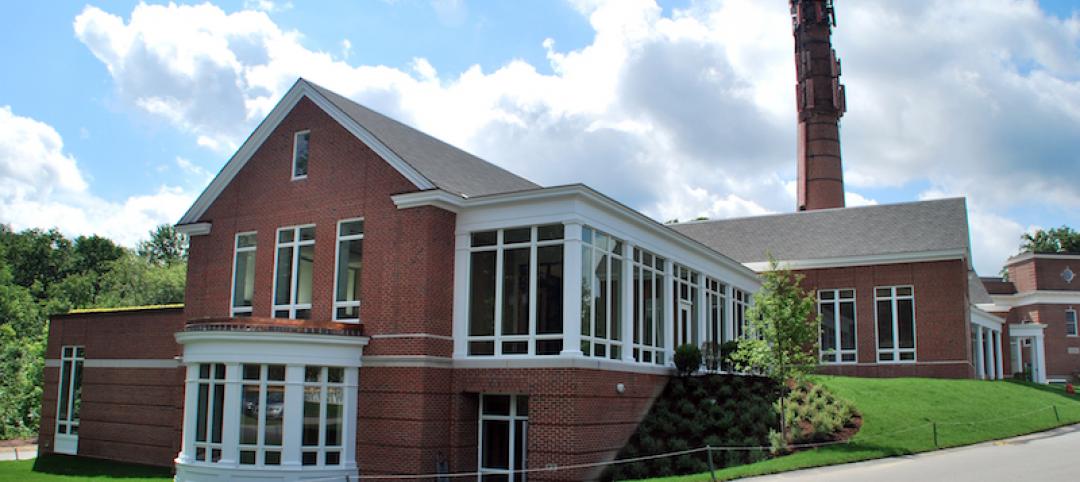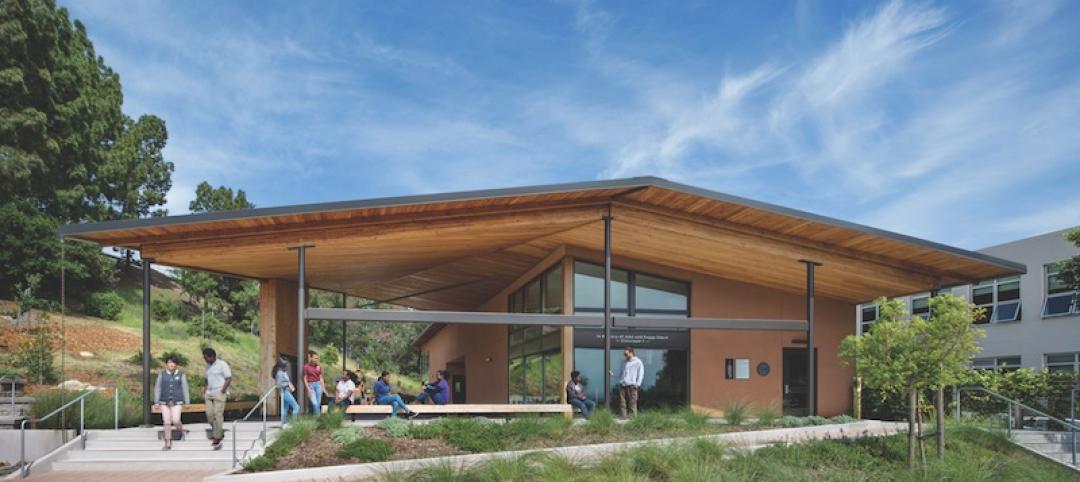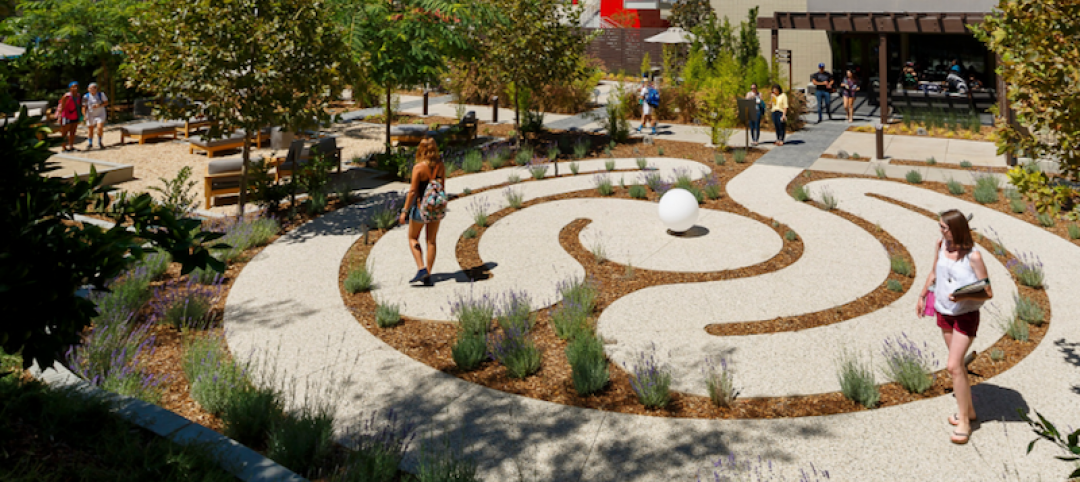In late March, Walsh School District in rural Colorado started construction on a 60,000-sf school that, when completed in the spring of 2024, will teach students in grades Pre-K through 12 under one roof.
In Georgia, the Savannah-Chatham County Public School System (SCCPSS) is wrapping up construction on a 410,000-sf K-12 multi-school project in Garden City, near Savannah, that will enroll about 2,400 students.
While corralling elementary, middle, and high school students in one building isn’t unheard of, it’s still more the exception than the rule, and controversial as news about bullying in schools has become more frequent. “If anything, more schools are separating grade levels,” observes Chris Greer, Henderson Engineers’ K-12 Education Practice Director.
A few years ago, JCJ Architecture designed a one-building K-12 school for a district in Rochester, N.Y. But, says Jim LaPosta, the firm’s Chief Architectural Officer, the prevailing single-building model remains K-8.
However, that could be changing. The general contractor Barton Malow has been working with the Kresge Foundation and the University of Michigan to build PK-16 schools in Detroit. (At least one is under construction, says Mike Stobak, the firm’s Vice President of its K-12 Group.)
The Savannah K-12 school is part of a larger trend toward school building consolidation, in Georgia and other states, asserts David Hamilton, Vice President and Regional Manager for Charles Perry Partners, the general contractor on the Garden City project, whose “all-in” cost is $135 million, according to Dr. Slade Helmly, SCCPSS’s project manager.
Phase 1 of this project, which will be completed this summer, includes two gyms, two cafeterias, and a common kitchen. The school will feature a digital media lab, career and technical education programs for aviation, logistics, and business, a two-story, 750-seat auditorium, and a parking lot with at least 660 spaces. Phase 2 went out for bid in May, says Helmly, and encompasses a fieldhouse and stadium, and campus police department. (The old police station had been on this site, as was Gross High School, both of which were demolished.)
A 50-kW solar array on the new building’s roof will supply one-third of the school’s energy needs.
Addressing security concerns in single-building K-12 schools
Vaughn Dierks, a Partner with Wold Architects & Engineers, which is the Project Architect on the Walsh School District’s PreK-12 school, says that having students of all grades in one building isn’t that big of a deal for this mountain community, where “the kids ride the same bus together, and the older kids look after the younger ones.”
Hamilton thinks that SCCPSS and LS3P Associates—which designed the Garden City school and hired the engineers and contractor for the building team—did a good job separating the lower and upper grades via glass partitions and access-control doors.
April Mundy and Lisa Pinyan, LS3P’s Project Architect and Senior Project Manager/Interior Designer, tell BD+C that their firm designed this campus as three buildings—a primary, middle, and high school—that “share a few common walls.” Administration and student services are strategically located in multiple locations throughout the building, which helps to delineate zones, supervision, and security.

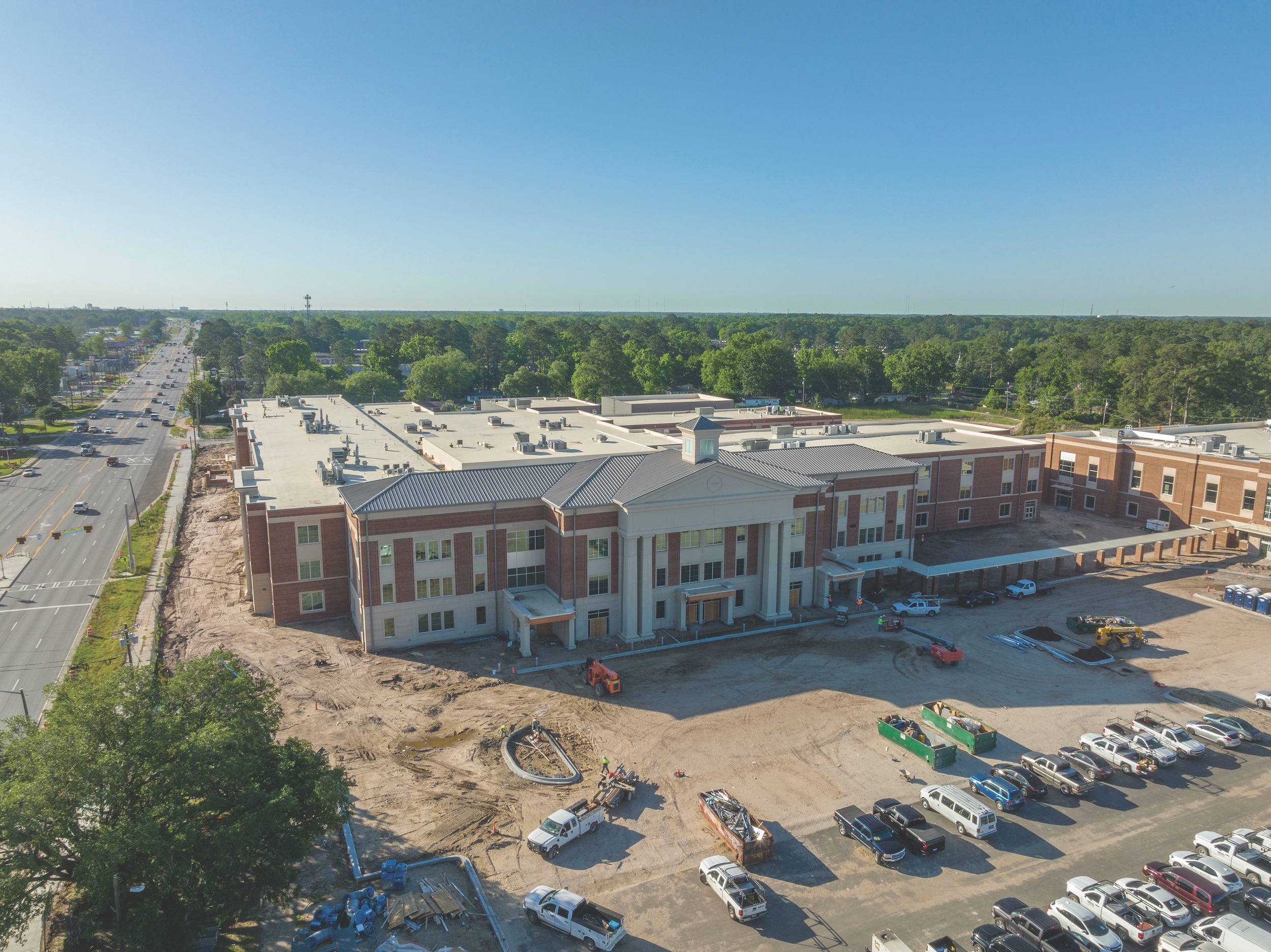
ambitious project as reinforcing the local community. Graphics: LS3P Associates
The idea behind the single-building K-12 school, they explain, is rooted in three basic tenets:
• Improving the educational experience by allowing the administration to adjust classroom grade assignments as enrollment ebbs and flows each year. This environment should also enhance professional development and cross collaboration, and provide more varied learning to students;
• Sharing common core programs and spaces that include specialized arts and performance venues, career education, athletics, and food services; and
• Improving security and operations with centralized systems, so infrastructure can be more efficient by serving a larger student population. Each phase of the building’s design followed Crime Prevention Through Environmental Design (CPTED) principles.
Mundy and Pinyan add that by having the grades together, “we’re able to create a hub and city center for local families to drop off and pick up their children. The goal is for this school to be a catalyst to build a strong community.”
Will single-building K-12 schools become a niche?
This is SCCPSS’s largest project to date, as well as the largest school project undertaken by Charles Perry Partners. “There’s a huge difference between building a $30 million K-8 school and a $100 million K-12 school,” says Hamilton. “It’s a different level of construction.” He’s a big believer in superintendents owning their areas of responsibility, so on this project, his firm brought on board assistant supers with specialties in MEP, exteriors, and so forth. “It was like building a mini company.”
Hamilton says his firm hopes to parlay the Georgia K-12 multi-school building into more multi-school business. “We are definitely showcasing this project, because people want to work with builders that have been there, and have the T-shirt.”
Related Stories
Education Facilities | Oct 3, 2017
The growing demand for early childhood education
When the design of early learning centers is grounded in the science of developmental psychology and education, these educational environments can address multiple domains of development that positively stimulate young children's physical and cognitive growth.
K-12 Schools | Oct 2, 2017
A Houston office park gets a new life as a private day school
Shepley Bulfinch designed the 75,000-sf campus.
K-12 Schools | Sep 20, 2017
Activating innovation: Trends in K-12 education
School structures offer a unique opportunity as they can often double as community centers and serve as shelters in the event of an emergency or natural disaster.
Architects | Sep 19, 2017
What we talk about when we talk about placemaking
What does Good Growth mean and how do we set about achieving it?
K-12 Schools | Sep 12, 2017
Perkins Eastman publishes findings on high-performance schools
Metrics suggest correlation between key design strategies and occupant satisfaction and building performance.
Performing Arts Centers | Sep 11, 2017
19th century smokestack highlights a Massachusetts performing arts facility
CBT Architects and Windover Construction collaborated on the adaptive reuse project for Middlesex School.
K-12 Schools | Sep 8, 2017
The economic case for engaged classrooms in K-12 schools
Flexible, modern classrooms should be viewed as a key element of a sound financial strategy, producing a solid return-on-investment.
K-12 Schools | Aug 31, 2017
Environmental studies building highlights sustainability in every design element
The LEED Platinum and Zero Net Energy Verified building minimizes energy use via its site orientation.
K-12 Schools | Aug 18, 2017
How to create healthy learning environments with active design
Active design can be incorporated into any facility or campus with a few simple steps.
K-12 Schools | Aug 9, 2017
A school in Denmark is clad in 12,000 solar panels
C.F. Møller designed the building to create a connection between the school premises and the surrounding public urban space.


